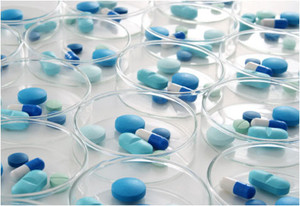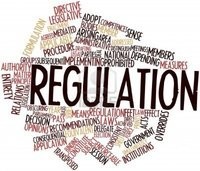On 21 May 2018, the US Food and Drug Administration issued final guidance on bioanalytical method validation.
FDA issues final guidance on bioanalytical method validation
Home/Guidelines
|
Posted 25/05/2018
 0
Post your comment
0
Post your comment

The document finalizes revisions from 2013 of the original guidance document from 2001. It is intended to help companies validate bioanalytical methods used in human clinical pharmacology, bioavailability (BA) and bioequivalence (BE) studies that require pharmacokinetic, toxicokinetic or biomarker concentration evaluation. The guidance can also inform the development of bioanalytical methods used for non-clinical studies that require toxicokinetic or biomarker concentration data.
Bioanalytical Method Validation
Date: May 2018
https://www.fda.gov/ucm/groups/fdagov-public/@fdagov-drugs-gen/documents/document/ucm070107.pdf
The final guidance incorporates public comments to the revised draft published in 2013 and provides recommendations for the development, validation and in-study use of bioanalytical methods. The recommendations can be modified with justification, depending on the specific type of bioanalytical method. The guidance also reflects advances in science and technology related to validating bioanalytical methods.
The final guidance is 10 pages longer than the previous draft document and includes revised text, as well as new title for Section III, which was previously named ‘Chromatographic methods’ but is now ‘Bioanalytical method development and validation’ and new sections on parameters of chromatographic assays (CCs) and ligand binding assays (LBAs).
The guidance states that ‘validating the analytical method ensures that the data are reliable by addressing certain key questions, including:
- Does the method measure the intended analyte? For example, does anything interfere with the measurement, and is the method specific or selective for the analyte?
- What is the variability associated with these measurements? For example, what are the accuracy and precision of the method?
- What is the range in measurements that provide reliable data? For example, what is the sensitivity of the method, e.g. what is the lower limit of quantitation (LLOQ) of the method, and what is the upper limit of quantitation the method (ULOQ)?
- How do sample collection, handling and storage affect the reliability of the data from the bioanalytical method? For example, what steps need to be followed while collecting samples? Do the samples need to be frozen during shipping? What temperatures are required to store the samples, and how long can the samples be stored?’
In Europe, the European Medicines Agency issued guidance in July 2011 on bioanalytical method validation, which came into effect in February 2012.
Although these guidelines for bioanalytical methods are welcomed, there remains a lack of recommendations for the development and validation of bioanalytical assays to support non-clinical and clinical studies for biosimilars [1].
Related article
Strategies for development and validation of neutralizing antibody assays supporting biosimilars
Reference
1. GaBI Online - Generics and Biosimilars Initiative. Bioanalytical challenges in the development of biosimilars [www.gabionline.net]. Mol, Belgium: Pro Pharma Communications International; [cited 2018 May 25]. Available from: www.gabionline.net/Biosimilars/Research/Bioanalytical-challenges-in-the-development-of-biosimilars
Permission granted to reproduce for personal and non-commercial use only. All other reproduction, copy or reprinting of all or part of any ‘Content’ found on this website is strictly prohibited without the prior consent of the publisher. Contact the publisher to obtain permission before redistributing.
Copyright – Unless otherwise stated all contents of this website are © 2018 Pro Pharma Communications International. All Rights Reserved.
Source: US FDA
Policies & Legislation
ANVISA tackles 24-month backlog in biologicals post-registration petitions
US EO: delivering Most-Favored-Nation Prescription Drug Pricing to American patients
Most viewed articles
The best selling biotechnology drugs of 2008: the next biosimilars targets
Global biosimilars guideline development – EGA’s perspective
New guidance for biologicals in Pakistan and Hong Kong’s independent drug regulatory authority

Home/Guidelines Posted 20/10/2025
Canada poised to remove requirement for Phase III trials for biosimilars

Home/Guidelines Posted 22/07/2025
The best selling biotechnology drugs of 2008: the next biosimilars targets








Post your comment